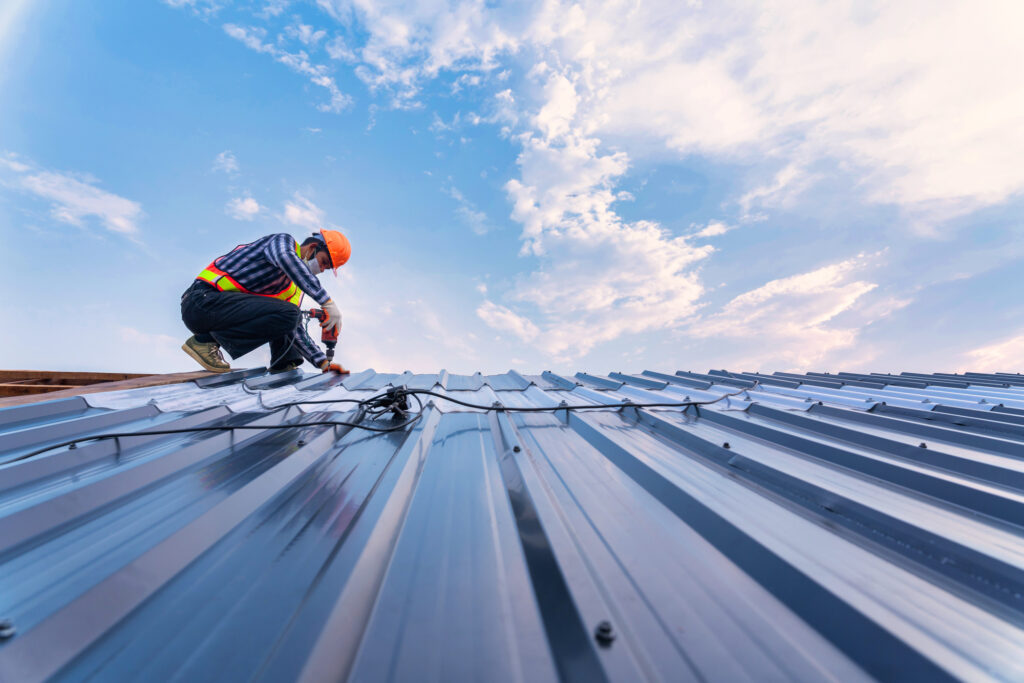Maximizing home energy efficiency is essential for sustainability and lowering utility expenses. Often underestimated, the roof can significantly influence a dwelling’s energy dynamics. By choosing the right materials and designs, you can enhance insulation, reduce heat absorption, and ultimately improve the overall energy efficiency of your home, leading to notable cost savings and environmental benefits.
This comprehensive guide explores how the right roofing choice can lead to substantial energy savings, enhanced comfort, and a reduced carbon footprint.
Understanding Roofing Materials
The path toward enhancing your home’s energy efficiency significantly hinges on the choice of roofing materials, each distinguished by its thermal properties and impact on the dwelling’s energy use. Among the myriad options, asphalt shingles, metal, clay tiles, and slate stand out for their popularity and distinct characteristics.
Metal roofs are particularly noted for their ability to reflect solar rays, thereby diminishing heat absorption and aiding in maintaining cooler indoor temperatures. This reflective capacity contrasts with traditional asphalt shingles, which tend to absorb heat, possibly increasing the need for air conditioning.
Factors To Consider When Choosing The Right Roofing Material
After exploring roofing materials, the next step is to consider essential factors for choosing the most energy-efficient option. Some factors include:
Insulation And Ventilation
A well-insulated and ventilated roof is crucial for maintaining an energy-efficient home. Proper insulation helps retain heat during colder months and keeps the house cool during warmer periods. Ventilation allows for adequate airflow, preventing heat buildup in the attic and reducing the burden on heating and cooling systems.
Consulting with a professional residential roofer can provide homeowners with tailored advice on improving their roof’s insulation and ventilation, aligning with specific climatic conditions and house designs.
Color And Coating
The color of a roof plays a pivotal role in its energy efficiency, with lighter shades being more effective at reflecting sunlight, thereby reducing the need for cooling in warmer climates. This principle is augmented by specialized reflective coatings on certain roofing materials designed to boost this sunlight-repelling effect. These reflective coatings and colors enhance your home’s energy efficiency and contribute to a more temperate indoor environment, marking significant progress in optimizing home energy performance.
Innovative Roofing Technologies
The evolution of roofing technology has ushered in an era of novel materials and designs specifically tailored to bolster energy efficiency. Among these sustainable options, green roofs stand out, characterized by their lush vegetation layer, which acts as a natural insulator, mitigates stormwater runoff, and combats the urban heat island phenomenon by cooling the surrounding air.
Another groundbreaking development is the integration of solar roofs, which come equipped with photovoltaic panels. These panels harness solar energy, converting it into electricity for the home, thereby reducing reliance on traditional power sources and potentially offering substantial savings on energy expenditures.

Maintenance And Durability
The energy efficiency of a roofing system is intrinsically linked to its durability and the maintenance it requires. Materials engineered to withstand adverse weather conditions and resist wear over time help maintain a roof’s thermal efficiency, preventing heat loss or gain that could strain heating and cooling systems. A regimen of regular maintenance, encompassing cleaning, inspections, and prompt repairs, is crucial in prolonging a roof’s lifespan and preserving its capacity to save energy.
Climate Considerations
The local climate plays a pivotal role when selecting the most suitable roofing system for energy efficiency. In regions with high temperatures and abundant sunshine, roofing materials that excel in reflecting solar radiation and are part of a design that promotes proper ventilation are highly sought after, as they help maintain cooler indoor environments.
Conversely, in areas subject to cold weather, the emphasis shifts towards roofing solutions that offer superior insulation properties and are adept at managing snow and ice, thereby preserving warmth within the home.
Cost-Effectiveness
Investing in energy-efficient roofing may entail a higher upfront cost, yet the ensuing reductions in energy expenses and the possibility of tax benefits can mitigate these initial expenditures. Assessing the return on investment is essential by considering the energy savings over the roof’s lifespan, revealing the true value and cost-effectiveness of the investment. This makes it a financially prudent choice in the long run.
Environmental Impact
Opting for an energy-efficient roofing system extends benefits beyond individual savings, playing a pivotal role in environmental preservation. Such roofing choices contribute to a decrease in energy demand, thereby reducing the emissions of greenhouse gases linked to conventional electricity generation. Aligning with environmental conservation efforts, sustainable roofing choices underscore their global positive impact, fostering a healthier planet.
Professional Consultation
Collaborating with seasoned roofing experts is crucial for homeowners aiming to enhance their property’s energy efficiency. These professionals can bring a wealth of knowledge, considering the home’s design, compliance with local regulations, and energy objectives to suggest the most fitting energy-efficient roofing options. Their expertise ensures you’re equipped with the information and recommendations to make informed decisions, optimizing your home’s energy performance and aesthetic appeal.
Conclusion
Maximizing energy efficiency with the right roofing choice is a process that involves careful consideration of materials, technology, and design. By keeping the information mentioned above in mind, you can enjoy lower utility costs, improve indoor comfort, and contribute to environmental sustainability. The journey to an energy-efficient home is a worthwhile investment, yielding benefits that extend well beyond the immediate financial savings.






